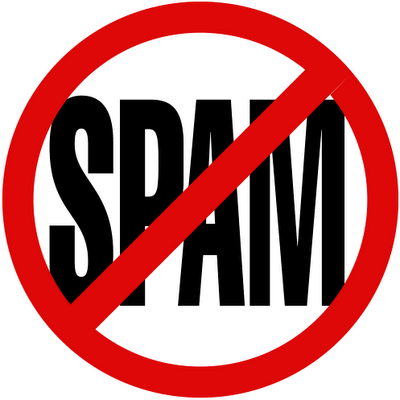Spam Down More Than 80% From This Time Last Year

With the developments of social networks such as Facebook and Twitter, I for one have done a lot less social communication by way of email. No longer does it make sense for users to email pictures or share tidbits from their lives via one-to-one email communication. Social networks allow for people to share with groups of people at once, and the implementation of comments leaves “reply to all” conversations in the dust.
This said, the lack of social email has definitely brought my daily email count down quite dramatically, leaving only serious collaboration and typically business-related discussion in my inbox. And seemingly proportional to the amount of email that I send and receive, I have personally noticed that I have had less spam (unsolicited junk email) in my inbox in the last year. In all honesty, though, I never questioned the diminished amount of spam received and haven’t really though much of it at all. If anything, I simply assumed that email providers like Google had developed better spam filters.
But as Mashable is now reporting, email spam is now down 82.22% across the globe; not just in my inbox but in yours as well. While the figure that 40 billion spam messages are sent each day may sound insanely high to you, I find it simply amazing that this number is down from 225 billion messages per day just last year.
Now, I’m not typically one to question a good thing. I could win the state lottery tomorrow and never second-guess my luck, but when it comes to something like this my curiosity often-times gets the best of me. In particular, one of the first things that I thought about when I read about the massive decreases in spam over the weekend was why. With the Internet growing on a daily basis – not only on our desks and laps, but in our pockets and fingertips by way of mobile web as well – it would seem more logical to hear that email spam went up in the past year.
However, the fact of the matter is that the last year has brought down a handful of large spam networks such as “Rustock”; a single group of individuals that was responsible for an estimated 40% of email spam across the globe. But while this does help to explain things a bit, I would imagine that with spam being such a profitable enterprise we would have seen more spam networks popping up left and right to take the place of the ones brought down by law enforcement.
But that may just be where I’m wrong. Is spam really a profitable criminal underground anymore? I mean, spam has become such commonplace in our day-to-day lives that many of us simply delete and report unsolicited messages, rarely giving them the time of day. And of course, that’s when we even see spam. Like I said earlier in this article, spam filters have become so advanced that the detection of spam is more or less fool-proof. And it’s getting better every day.
Perhaps the biggest reason, though, is because email is no longer the prime target for spammers. Just like you and me are flocking to social networking sites, spammers have come to the realization that the social networks are the places to hit it big. I can’t tell you how many spam messages I’ve seen on Facebook in the last year, but I can sure tell you that that number seems to be growing. Likewise, Twitter seems to be infested with spammers at levels higher than anyone would like to admit. Don’t believe me? Mention the word “iPad” in a tweet and see just how many automated spam replies you get.
This is one thing that I’m curious to see with Google+. Because Google has been working in spam-fighting mechanisms on the email side of things for so long, I personally feel that the company will have a great edge when it comes to fighting spam on their new social network.
Regardless, I’m happy to see email spam down. Seeing as how most of my important business is handled via email, I can sure use less clutter there.